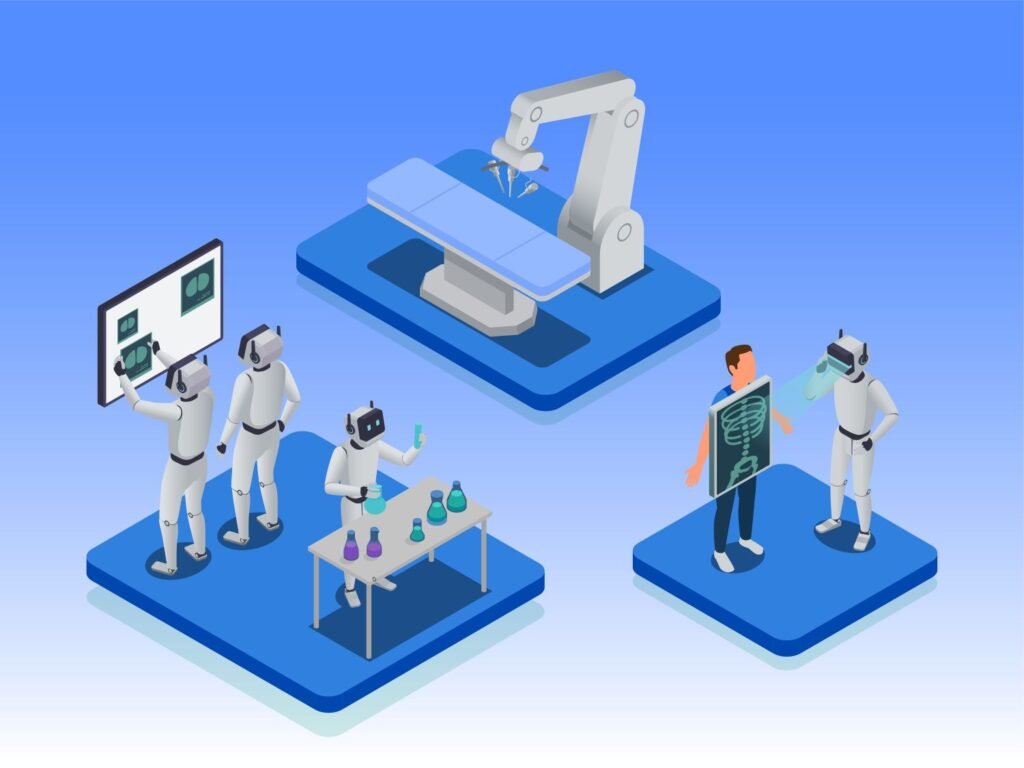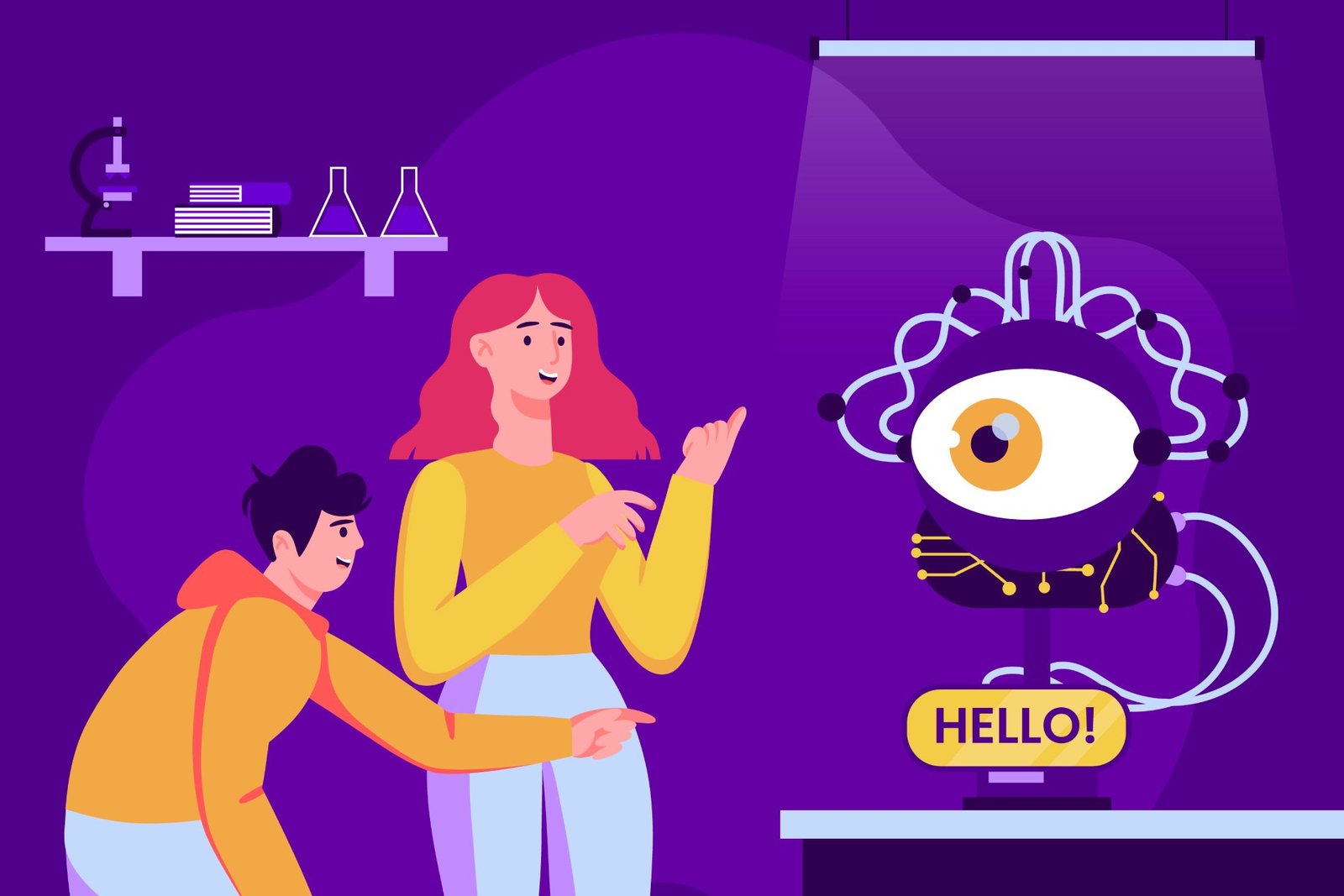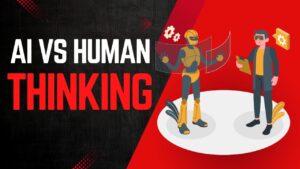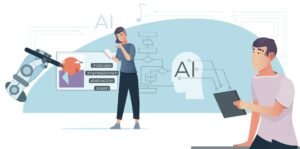Key Takeaways:
- Vision Language Models (VLMs) combine image and text processing to understand and describe visual content, unlike traditional AI models that handle only one type of data.
- VLMs enable tasks like answering questions about images, generating captions, extracting text from documents, and analyzing graphs.
- They work by converting images into numerical data, aligning it with text, and processing both through a language model to produce meaningful responses.
- Challenges include computational demands, potential inaccuracies (hallucinations), and biases from training data, but ongoing research is improving their reliability.
- VLMs are increasingly used in accessibility, healthcare, education, and robotics, with recent advancements making them more efficient and versatile.
On This Page
Table of Contents
Imagine you’re reading a children’s book filled with colorful pictures and text. As you look at an image of a dog running in a park, you read the caption, “The dog chases a ball.” Your brain connects the image and words, understanding the scene. Vision Language Models (VLMs) do something similar, combining the ability to “see” images and “understand” text to perform tasks that were once impossible for AI. In this article, we’ll dive into how VLMs work, what they can do, their real-world applications, the challenges they face, and what the future holds, all explained in a way that’s easy to grasp.
The Evolution of AI and the Need for VLMs
Artificial intelligence has come a long way. Early AI models, like Convolutional Neural Networks (CNNs), were great at recognizing objects in images, such as identifying a cat or a car. Meanwhile, Large Language Models (LLMs) like those powering chatbots could understand and generate text, answering questions or writing stories. But these models worked in isolation: CNNs couldn’t understand text, and LLMs couldn’t process images. This was a problem when dealing with real-world data, like a PDF with both text and images, where understanding both is crucial.
Enter Vision Language Models (VLMs), which emerged around 2019 with models like VisualBERT and ViLBERT. These early models laid the groundwork for combining vision and language. A major breakthrough came in 2021 with CLIP by OpenAI, which used contrastive learning to align images and text, enabling tasks like zero-shot image classification. Since then, VLMs have evolved rapidly, becoming smaller, more powerful, and capable of handling multiple modalities, as seen in models like LLaVA and Qwen2.5-VL.
What Are Vision Language Models?
Vision Language Models (VLMs) are AI systems that can process and understand both images and text, producing text-based outputs. They’re like a super-smart assistant who can look at a picture, read a question, and respond with a meaningful answer. Unlike traditional models that handle only one type of data, VLMs are multi-modal, meaning they can work with multiple data types simultaneously. They’re trained on large datasets, such as COCO or Flickr30k, which contain images paired with text descriptions, allowing them to learn how visual elements relate to words.
For example, if you show a VLM a photo of a busy city street and ask, “What’s happening here?” it can analyze the image and respond, “A car is waiting at a red light, and pedestrians are crossing the street.” This ability to combine visual and textual understanding makes VLMs incredibly versatile.
How VLMs Work: A Peek Under the Hood
To understand how VLMs work, let’s use an analogy. Imagine you’re trying to explain a painting to a friend who speaks a different language. You first describe the painting in your language (the image), then translate it into your friend’s language (text) so they can understand. VLMs follow a similar process, broken into three key components:
| Component | Function | Analogy |
|---|---|---|
| Vision Encoder | Converts images into numerical data called feature vectors, capturing details like shapes, colors, and textures. | Your eyes scanning the painting, noting its colors and shapes. |
| Projector | Transforms feature vectors into image tokens that match the format of text tokens used by the language model. | A translator converting your description into your friend’s language. |
| LLM Integration | Combines image and text tokens, processes them using attention mechanisms, and generates a text response. | Your friend understanding the painting’s description and responding. |
The vision encoder takes an image and breaks it into smaller parts, like puzzle pieces, extracting patterns and features. For instance, in a photo of a dog, it might identify the dog’s fur, ears, and the background grass. These are turned into feature vectors, a numerical representation of the image’s content.
The projector then maps these vectors into a format compatible with the text tokens used by the large language model (LLM). This ensures that the image data “speaks the same language” as the text data. Finally, the LLM processes both types of tokens together, using attention mechanisms to understand how they relate, and generates a response, like a caption or an answer to a question.
Tasks Performed by VLMs
VLMs can perform a variety of tasks that make them powerful tools:
- Visual Question Answering (VQA): You can ask a VLM questions about an image. For example, show it a picture of a kitchen and ask, “Is there a knife on the counter?” The model analyzes the image and responds, “Yes, there’s a knife near the cutting board.” This is useful for applications like navigation aids or interactive learning tools.
- Image Captioning: VLMs can generate natural language descriptions of images. For instance, an image of a sunset might be captioned, “A vibrant orange sunset over a calm ocean.” This is particularly valuable for accessibility, helping visually impaired users understand visual content.
- Document Understanding: VLMs can extract and interpret text from images, such as reading a scanned receipt to list purchased items or summarizing a form’s contents. This is like having an AI assistant that can digitize and organize paperwork.
- Graph Analysis: VLMs can interpret data visualizations, such as charts or graphs. For example, given a sales report graph, you could ask, “What was the sales trend last quarter?” and the VLM might respond, “Sales increased steadily by 10%.”
Here’s a simple example of how to use a VLM for image captioning using the Hugging Face Transformers library:
from transformers import pipeline
# Load the image captioning pipeline
captioner = pipeline("image-to-text", model="Salesforce/blip-image-captioning-base")
# Provide an image URL or local path
image_url = "https://huggingface.co/datasets/huggingface/documentation-images/resolve/main/vlm_example.jpg"
# Generate a caption
caption = captioner(image_url)[0]['generated_text']
print(caption)This code loads a pre-trained VLM, processes an image, and generates a caption, demonstrating how easy it is to use VLMs for practical tasks.
Real-World Applications of VLMs
VLMs are transforming various industries by enabling new ways to interact with technology. Here are some key applications:
| Application Area | Use Case | How VLMs Help |
|---|---|---|
| Accessibility | Image description for visually impaired | Generate textual descriptions of images to aid navigation or content understanding. |
| Customer Service | Automated responses to image-based queries | Answer questions about products based on uploaded images, like identifying a defect. |
| Healthcare | Medical image analysis | Assist doctors in analyzing X-rays or MRIs to identify potential issues. |
| Education | Interactive learning tools | Explain concepts in textbooks by combining images and text, enhancing student engagement. |
| Robotics | Environment understanding | Help robots interpret visual scenes and follow instructions, like navigating a warehouse. |
For example, in accessibility, VLMs power apps that describe photos for visually impaired users, making social media or websites more inclusive. In healthcare, a VLM might analyze an X-ray and answer, “Is there a fracture?” assisting radiologists in early diagnosis. In education, VLMs can make learning interactive by answering questions about diagrams in a science textbook.
Challenges and Limitations
While VLMs are powerful, they face several challenges that researchers are working to address:
- Tokenization Bottlenecks: Unlike text, which is naturally broken into words, images must be converted into tokens, a process that’s computationally intensive. This can slow down processing and increase memory usage, making VLMs less efficient than text-only models.
- Hallucinations: VLMs sometimes generate plausible but incorrect information, known as hallucinations. For instance, a VLM might describe a cat in an image as a dog because of learned statistical patterns. Research, such as the study “POPE: Evaluating Object Hallucination in Large Vision-Language Models” (POPE Paper), shows that even advanced models like InstructBLIP can produce hallucinatory text up to 30% of the time.
- Bias in Training Data: VLMs are trained on large datasets scraped from the web, which can contain biases related to gender, race, or culture. For example, a VLM trained on Western-centric data might misinterpret cultural artifacts from other regions. Studies like “Mapping Bias in Vision Language Models” (Mapping Bias Paper) highlight the need for diverse datasets to ensure fairness.
To mitigate these issues, researchers are developing techniques like contrastive tuning to reduce hallucinations and curating more representative datasets to address biases. These efforts aim to make VLMs more reliable and equitable.
VLMs in 2025
The field of VLMs is evolving rapidly. As of 2025, recent advancements have made VLMs smaller, more efficient, and capable of handling multiple modalities, including video and audio. Models like Qwen2.5-VL and Kimi-VL-Thinking offer advanced reasoning and agentic capabilities, running on consumer hardware. New paradigms, such as multimodal Retrieval Augmented Generation (RAG) and Vision-Language-Action (VLA) models for robotics, are expanding their applications.
Future developments may include better integration of modalities, reduced biases through improved training data, and enhanced robustness against hallucinations. VLMs could power more intuitive AI assistants, revolutionize education with interactive tools, and enable robots to navigate complex environments with ease.
WrapUP
Vision Language Models (VLMs) are a game-changer in AI, enabling machines to understand and describe the world by combining images and text. From answering questions about photos to digitizing documents and analyzing graphs, VLMs are making technology more accessible and useful. While challenges like computational demands, hallucinations, and biases remain, ongoing research is paving the way for more accurate and fair models.

As VLMs continue to evolve, they promise to transform industries and enhance our interaction with the digital world.
FAQs
What exactly is a Vision Language Model (VLM)?
Answer: A Vision Language Model (VLM) is an AI system that can understand both images and text at the same time. Imagine it like a super-smart friend who can look at a photo, read a question about it, and give you a clear answer in words. For example, if you show a VLM a picture of a park and ask, “What’s happening here?” it might say, “Kids are playing on a swing set.” VLMs combine a vision encoder to process images and a language model to handle text, making them great for tasks like describing images or analyzing documents with pictures.
How do VLMs differ from regular language models like chatbots?
Answer: Regular language models, like those powering chatbots, only work with text. They can answer questions or write stories but can’t understand images. VLMs, on the other hand, are multi-modal, meaning they can process both text and images. For instance, while a regular chatbot can summarize a text document, a VLM can also analyze a photo or a chart in that document, making it more versatile for real-world tasks like reading a scanned receipt or describing a scene.
Can VLMs make mistakes when analyzing images?
Answer: Yes, VLMs can sometimes make mistakes, called hallucinations, where they describe something that isn’t there. For example, a VLM might see a cat in a photo and call it a dog because of patterns it learned during training. This happens because VLMs rely on statistical associations, not human-like vision. Researchers are working on reducing these errors by improving training data and fine-tuning models.
How are VLMs trained to understand images and text together?
Answer: VLMs are trained on huge datasets containing pairs of images and text, like photos with captions from the internet (e.g., COCO or Flickr30k datasets). During training, the model learns to connect visual patterns (like a dog’s shape) with words (like “dog”). It uses a vision encoder to turn images into numerical data and a language model to process text, aligning both in a shared space to understand their relationships.
Can VLMs read text in images, like a scanned document?
Answer: Yes! VLMs can extract text from images, such as reading a scanned receipt or a handwritten note. For example, if you upload a photo of a grocery receipt, a VLM can list the items you bought, their prices, and even summarize the total. This is called document understanding and is super useful for digitizing paperwork or organizing data.
Do VLMs work with any type of image?
Answer: VLMs can handle many image types, like photos, charts, diagrams, or scanned documents. However, their accuracy depends on the training data they’ve seen. For instance, a VLM trained mostly on everyday photos might struggle with complex medical images unless it’s been fine-tuned for that purpose. Most modern VLMs are versatile but may need specific training for niche tasks.
How will VLMs improve in reducing biases over time?
Answer: By 2027, VLMs are likely to reduce biases through more diverse training datasets that better represent global cultures, genders, and contexts. Techniques like adversarial debiasing and community-driven dataset creation could help. For example, a future VLM might accurately identify cultural artifacts from non-Western contexts, unlike some current models trained on Western-centric data, ensuring fairer and more inclusive outputs.
Will VLMs be able to process videos as well as images in the future?
Answer: VLMs are already starting to handle videos, and this capability will likely expand by 2026–2027. Future VLMs may analyze video content frame by frame, combining it with audio and text to understand dynamic scenes. For example, you could show a VLM a video of a soccer game and ask, “Who scored the goal?” and it might respond, “The player in the blue jersey scored in the 10th minute.” Models like Qwen2.5-VL are paving the way for this multi-modal future.
Can VLMs be integrated into everyday devices like smart glasses or cars?
Answer: In the next 3–5 years, VLMs are expected to power devices like smart glasses or autonomous vehicles. For instance, smart glasses with a VLM could describe your surroundings in real-time, saying, “There’s a coffee shop on your left,” aiding navigation. In cars, VLMs could analyze road signs and traffic conditions, providing real-time instructions like, “Slow down, there’s a pedestrian crossing ahead.” Advances in on-device processing will make this seamless.








